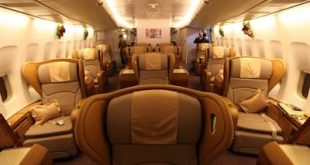 In this post of the series dedicated to the Business Model Canvas tool, developed by Alexander Osterwalder and Yves Pigneur, I will describe the last building block of the canvas called Cost Structure. However before you continue reading I recommend you to read the other parts of this series where I introduce the tool and explain the other eight blocks: customer segments, value proposition, channels, customer relationships, revenue streams, key resources, key activities and key partnerships.
In this post of the series dedicated to the Business Model Canvas tool, developed by Alexander Osterwalder and Yves Pigneur, I will describe the last building block of the canvas called Cost Structure. However before you continue reading I recommend you to read the other parts of this series where I introduce the tool and explain the other eight blocks: customer segments, value proposition, channels, customer relationships, revenue streams, key resources, key activities and key partnerships.
Returning to the subject of this article, the building block of cost structure helps to define all the expenses in which the company is going to incur in order to operate. In this point defining these outgoings should be easy because you have already defined the key resources, key activities and key partnerships, which are the ones that will generate expenses.
Difference between value-driven and cost-driven businesses
All businesses should generate money. In this way companies will always try to increase revenues and diminish expenses. However for some business models it will be more important to reduce costs than for other types of models. Thus we can differentiate two types of models: cost-driven and value-driven. On the first type of businesses, costs of resources and activities will be diminished at their maximum point. Examples of this are low cost airlines. On the other hand value-driven businesses are more interested in generating value to their customers than in reducing costs. Examples of this are Fashion Houses that offer high quality and great designs, creating value for their customers, even if this implies higher costs.
In what types of costs do companies incur?
On the Business Model Canvas, Osterwalder and Pigneur retake what other authors have stated and differentiate the types of outgoings:
- Fixed Costs: they refer to all the expenses that do not depend on the production volume. Examples of this are machinery because it does not matter if we produce a thousand or a million units, the machines will have the same price. Other examples are wages and rent.
- Variable Costs: in a different way than the fixed costs this do depend on the production volume. An example of this is raw material. The company will buy supply according to the volume they are going to produce.
- Economies of Scale: this might be counted as a variable cost but refers to the benefits that are obtained when large quantities are purchased. The same raw material I mentioned before might cost less if the company buys multiple batches.
- Economies of Scope: this is also a type of advantage companies might get when they are able to unite many activities. For example on big companies that produce different products they might reduce their costs in marketing and distribution if they are able to endure them with the same operation team.
With this post I finish the description of all the building blocks of the tool. On my next article y will finish this series with some explanations that we should take into account before we start using the canvas.
Image taken from Flickr.com
 An Entrepreneur Blog Management, Strategy, Internet, Technology, Social Networks, Organizational Change and more!
An Entrepreneur Blog Management, Strategy, Internet, Technology, Social Networks, Organizational Change and more!
